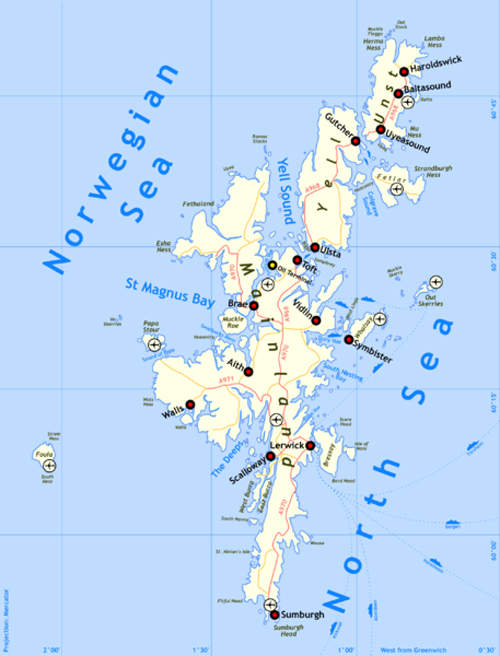RESIDENTS of the Shetland Isles have the best quality of life of any rural area in Scotland, according a new survey.
In fact, the Scottish Isles occupy two of the top three positions, with neighbouring Orkney in third place. Aberdeenshire in second place separates the two sets of islands.
Residents tend to be fit and well with 93% reporting themselves to be in good or fairly health.
Shetland residents have less sunshine than the rest of Scotland
They also have a higher than average life expectancy of just over 77 years, according to the Bank of Scotland Rural Areas Quality of Life Survey.
The employment rate is the highest in Scotland, close to 84%, with weekly average earnings of £605 – £30 above the average for Scotland of £575.
The level of school qualifications is also above the national average – 91% achieve five or more SCQF level 4 awards compared to the Scotland average of 78%.
Inhabitants live in relative security with one of the lowest crime rates in the country. The Shetland Isles have one of the lowest population densities with just 15 people per square kilometres.
Living the good life does not come at a particularly high cost. Average house prices in the Shetlands are 4.2 times average gross annual local earnings – below the Scotland average of 4.7.
However, residents enjoy on average three hours less sunshine per week compared to Scotland as a whole, and only just over half of households have a good level of broadband access.
Value
Aberdeenshire scores well on employment (81%) and weekly average earnings (£642), while 93% of residents enjoy good or fairly good health and live on average for 78.2 years.
Residents enjoy a relatively good climate with less rainfall per year than the average for Scotland and, on average, one hour more sunshine per week.
However, living there is relatively expensive with an average house price to earnings ratio of 5.7 – one of the highest in Scotland.
The Shetland Isles and Aberdeenshire are also in the top 50 rural areas quality of life survey for Britain as a whole, further emphasising their popularity and value for residents.
Aberdeenshire is followed by the Orkney Islands, which generally score well on employment, higher than average life expectancy, residents typically regarding themselves in good health and pupils excelling in school exams.
Nitesh Patel, economist at the Bank of Scotland, commented: “In recent years, the Shetlands have performed consistently well against a wide range of indicators to demonstrate that its residents have amongst the best quality of life in Scotland.
“The Islands scores highly relative to the average for Scotland on several indicators, such as health, life expectancy, employment, average earnings, school results and low crime rates.
“Even average house prices are relatively low in relation to earnings, highlighting that a high standard of living does not always come at a high price.”


